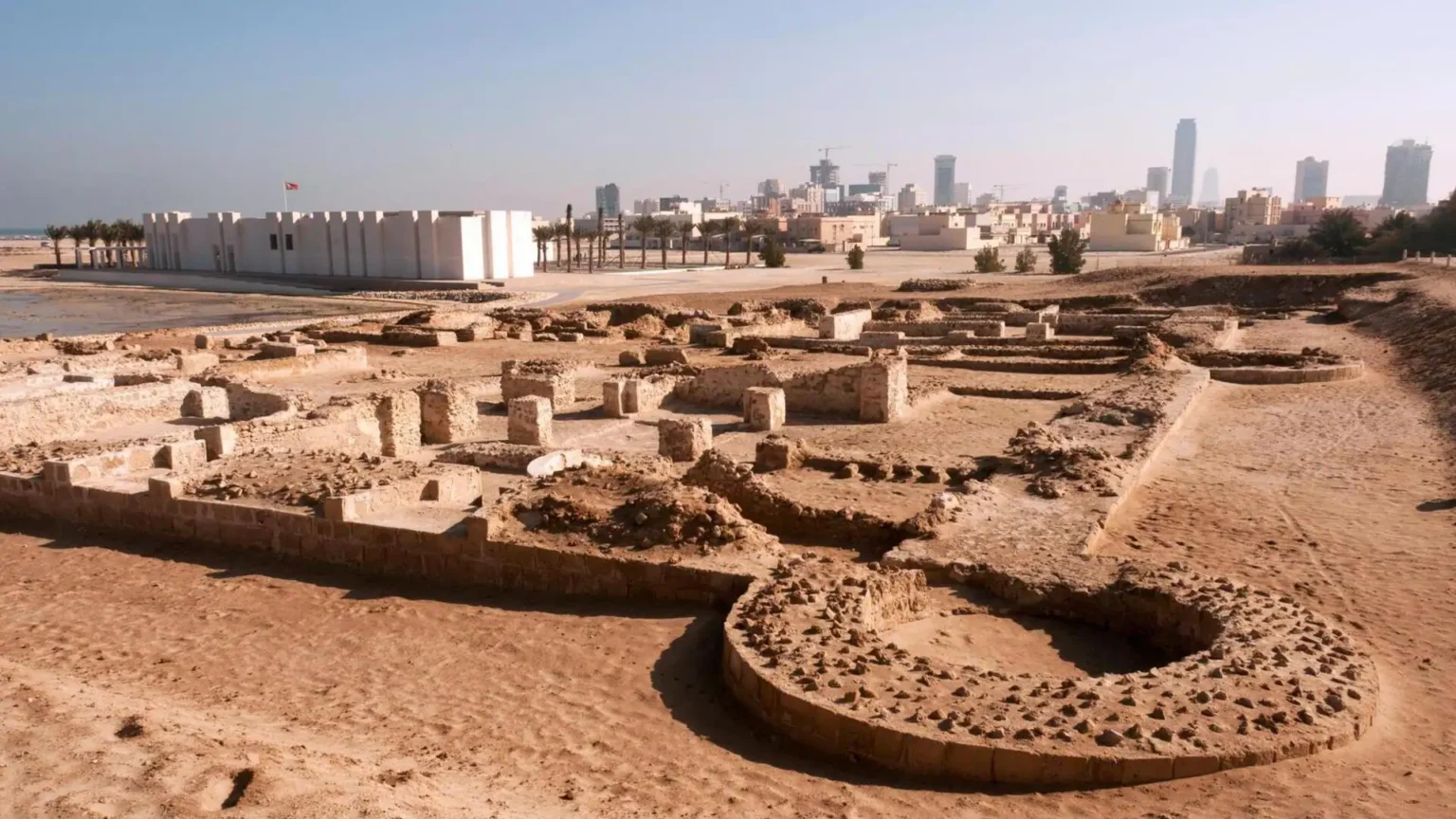The discovery of Dilmun archaeological sites is sparking excitement among historians and archaeologists worldwide. These findings are shedding new light on one of the Gulf region’s most enigmatic civilizations, known as the Dilmun civilization, which thrived thousands of years ago in present-day Bahrain and parts of Eastern Arabia. The uncovering of these sites is helping researchers understand the rich cultural, economic, and social life of this ancient society.
What Is the Dilmun Civilization?
The Dilmun civilization, dating back to around 3000 BCE, is often described as a “land of immortality” in ancient Mesopotamian texts. It was a thriving trade hub connecting Mesopotamia (modern-day Iraq), the Indus Valley (modern-day Pakistan and India), and the Arabian Peninsula. Dilmun’s strategic location along trade routes allowed it to flourish as a center of commerce, culture, and religion.
Archaeological evidence suggests that the Dilmun civilization had advanced urban planning, sophisticated burial practices, and a strong economic system centered around trade in copper, pearls, dates, and other valuable commodities.
Recent Discoveries and Excavations
Recent excavations in Bahrain, Saudi Arabia, and Kuwait have revealed several Dilmun archaeological sites. These sites include ancient settlements, burial mounds (locally called “tombs”), temples, and trade-related structures. Some of the most significant discoveries include:
- Royal Tombs of Bahrain: Recently unearthed tombs contain artifacts such as jewelry, pottery, and tools, indicating the wealth and advanced craftsmanship of Dilmun society.
- Temple Ruins: Excavations have revealed religious sites with altars and ceremonial objects, highlighting the civilization’s spiritual practices.
- Urban Structures: Foundations of residential areas and marketplaces point to organized city planning and trade networks.
- Trade Artifacts: Items from Mesopotamia, the Indus Valley, and Arabia suggest that Dilmun was a central hub for international trade in the Bronze Age.
Archaeologists believe that continued excavation will uncover more details about Dilmun’s societal structure, daily life, and influence on neighboring civilizations.
Significance of the Discovery
The discovery of Dilmun archaeological sites is significant for several reasons:
- Historical Insight: These sites provide valuable evidence about the life, culture, and governance of one of the Gulf’s earliest civilizations.
- Cultural Heritage: Preserving and studying these findings helps Gulf countries celebrate their ancient heritage and educate future generations.
- Tourism Potential: The sites are attracting global attention, offering opportunities for heritage tourism in Bahrain and the broader Gulf region.
- Academic Research: The discoveries encourage further scholarly research, leading to collaborations between local and international archaeologists.
Experts believe that Dilmun’s influence on trade, religion, and urban planning was more extensive than previously thought. The findings may reshape the understanding of the Gulf region’s historical importance.
Insights from Archaeologists
Dr. Nadia Al-Hadid, a leading archaeologist involved in the Bahrain excavations, stated:
“The Dilmun civilization was not only a trading hub but also a cultural beacon. Every artifact we uncover tells a story of its people, their beliefs, and their connections to the wider ancient world.”
Similarly, Dr. Ahmed Al-Khalifa emphasized the global importance of these discoveries:
“These sites are key to understanding the early interactions between Mesopotamia, the Indus Valley, and the Arabian Peninsula. Dilmun was a crossroads of ancient civilizations.”
Challenges in Excavation and Preservation
Excavating and preserving Dilmun archaeological sites is not without challenges. Some of the key issues include:
- Environmental Factors: The hot, arid climate of the Gulf can damage fragile artifacts.
- Urban Expansion: Modern development in Bahrain and neighboring regions sometimes threatens ancient sites.
- Funding Limitations: Archaeological research requires significant investment, which can be a constraint in long-term excavations.
Efforts are ongoing to balance preservation with research and tourism, ensuring these invaluable cultural treasures are protected for generations to come.

The Future of Dilmun Archaeological Research
The ongoing excavations are just the beginning. Experts predict that future discoveries will include:
- More burial sites with intricate artifacts.
- Larger urban settlements with complex infrastructure.
- Evidence of Dilmun’s influence on neighboring regions.
- Insights into daily life, including diet, clothing, and social hierarchies.
The collaboration between Gulf nations and international research teams promises to bring Dilmun’s ancient history to the forefront of global archaeology.
How the Discovery Impacts Gulf Heritage
The discovery of Dilmun archaeological sites strengthens Gulf countries’ identity and historical narrative. It highlights the region’s role in early civilization development and fosters a sense of pride among local communities. These findings also provide educational opportunities, helping students, historians, and enthusiasts learn about ancient trade, culture, and religious practices.
Governments in Bahrain and Saudi Arabia are increasingly investing in cultural heritage projects, museum exhibitions, and heritage tourism initiatives to showcase these discoveries to the world.
Conclusion
The discovery of Dilmun archaeological sites marks a remarkable chapter in Gulf archaeology. From royal tombs and temple ruins to trade artifacts and urban structures, these findings provide a window into a civilization that thrived over 5,000 years ago. As research continues, the world will gain a deeper understanding of Dilmun’s contributions to trade, culture, and early civilization in the Gulf region.
This discovery not only enriches the historical narrative of the Gulf but also strengthens its cultural identity, offering both educational and tourism opportunities for the future.
Do Follow Gulf Magazine on Instagram
Also read: Oman’s Textile Market Poised for Remarkable Growth: New Hub in Sohar Freezone



